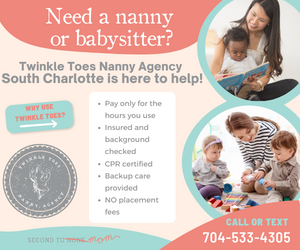This article was previously published on Atrium Health's Daily Dose
Choosing the right car seat and using it correctly can make a substantial difference in your child's safety. Dr. Erica Jones at Atrium Health Levine Children's Rocky River Pediatrics offers expert guidance on how to secure your most precious cargo.
As soon as you become a parent, it feels like you hit the ground running. You want to keep them safe from the moment they enter the world, and one of the ways to do that is by transporting them safely in the car. Choosing the right car seat, knowing how to install it, and understanding the nuances of its usage can make a significant difference in keeping your child safe on the many car adventures that lie ahead. (Or your maiden voyage to the grocery store!)
Dr. Erica Jones, a pediatrician at Atrium Health Levine Children's Rocky River Pediatrics, says car accidents are the leading cause of death in children ages 1-13 years old. Many of those deaths occur when a child is unrestrained or incorrectly restrained.
"Properly sized and installed car seats and booster seats greatly improve the survival rates and outcomes of children in car accidents," Jones says. "But unfortunately, nearly 50% of all car seats are incorrectly installed."
Jones shares some essential elements of car seat safety, so you have a better understanding of how to secure your most precious cargo.
Overall safety
Installing a car seat can feel like a serious cardio session. By the time you locate those anchor clips and tighten the tether straps, you may find yourself breaking out in a full-on sweat. (If you know, you know.) But proper installation and adjustment of a car seat is critical in keeping your little one safe.
To ensure that the seat is installed correctly, take the time to review and follow the manufacturer's instructions. You can also consult with your child's pediatrician for personalized advice.
Here are a few more helpful tips from Jones about car seat safety:
- Car seats can "expire." Every car seat has a designated expiration date, determined by the manufacturer, that means a car seat's structural integrity will not be up to regulations if it is past the expiration date. Several factors can make the seat less safe over time, putting a child at higher risk for serious injury or even death in the event of a collision.
- Car seats should be replaced after an accident. Like bike helmets, car seats are designed to protect a child from one A car seat that has been in an accident will be damaged. It is meant to take the hit, so your child doesn't.
- If you are buying a used car seat, make sure to check the expiration date (usually found on the bottom) and ask if it has ever been involved in an accident of any kind.
- If you are in an accident, car seats should be included in the damage expenses for insurance. Many insurance plans will replace the car seat, along with the other repairs to the car.
- Take advantage of free car seat installation and inspection from certified inspectors – which can be found at many fire stations and police departments.
- Be sure to register your car seat with the manufacturer to ensure you receive timely notification of any recalls or safety updates.
5-Point vs. 3-point harnesses
One of the fundamental decisions parents may face when choosing a car seat is whether to opt for a 5-point harness or a 3-point harness. Although it can feel overwhelming to comb through the car seat options available, Jones says a 5-point harness is nonnegotiable.
"A 5-point harness is the only style of restraint that is recommended for children that are in a rear-facing or forward-facing car seat," Jones says.
With straps over both shoulders, around the hips, and between the legs, the 5-point harness offers superior restraint and protection compared to the 3-point harness. It minimizes the risk of ejection and provides better stability during a collision.
Get the right fit
Once the seat is installed in the car, it's time to think about the safest way to buckle your child into it. Jones says the chest plate of the harness (where the top part of the harness buckles at the child's chest) plays a crucial role in ensuring the car seat protects the child correctly in the event of a collision.
"Placed too high, and the chest plate can injure the soft tissue structures of the neck, leading to restricted breathing," Jones says. "Placed too low, and the chest plate cannot provide enough restraint to keep the child's head and neck secure, leading to possible head and neck injuries, like whiplash."
To get the right fit, ensure that the chest plate is at armpit level when tightened. The harness should be tightened enough to pass the "pinch test": When pinching the harness webbing vertically at the shoulder with the thumb and forefinger, your fingers should slide off easily and you should not be able to pinch any extra webbing between them. The harness should also lie flat and fit snugly (but not uncomfortably) on the child's shoulders and hips.
Consider height and weight
Car seat manufacturers provide specific weight and height guidelines for each seat. It is crucial to follow these guidelines diligently. Transitioning your child to the next type of car seat should be based on these recommendations, not only their age. Using the appropriate seat for your child's size ensures optimal protection.
Jones says there is one caveat to age-based guidelines: all babies under 1 year old should be secured in a rear facing seat.
"After they reach one year old, toddlers and children should remain rear-facing for as long as possible," Jones says. "This is the safest position for them."
Once the child reaches the maximum height and weight limits for the rear-facing settings (check your car seat's specific parameters), the child can be placed in a forward-facing position.
"Even when they are moved to a forward-facing position in the car seat, children should be secured with a 5-point harness," Jones advises.
Once a child maxes out of the forward-facing harness measurements, it's time for a booster seat! Although it can be an exciting transition at first, Jones says many parents don't realize that children need to be secured in a booster seat until they are tall enough to safely be secured by the seatbelts.
"This is typically 4 feet 9 inches tall," Jones says. "On average, children reach this height between 9 and 12 years old – which tends to be much older than most parents realize their child needs to be in a booster seat."
Jones also reminds parents that children should not sit in the front seat of a vehicle until they are at least 13 years old.
The no-coat rule
One tip that some parents might find surprising is that it can be dangerous for kids to wear bulky winter coats in their car seats. While keeping your child warm is essential, wearing thick coats in a car seat can compromise their safety.
"Bulky clothing or blankets create a gap between the harness and your child's body, making it impossible to secure the harness correctly, which increases the risk of injury in a crash," Jones says.
Instead, Jones recommends dressing your child in thin layers and placing blankets or jackets over the child's straps after they are securely buckled.
Following these guidelines ensures that your child is protected during every car journey. The use of car seats is not just a legal requirement but a crucial investment in your child's safety and well-being.
As parents, the road we travel is filled with twists, turns, and unexpected detours. But every time you buckle your child into their car seat, you're not just securing them for a trip; you're securing their future dreams and adventures.
Need a co-pilot to help your child thrive? Find an Atrium Health Levine Children's pediatrician near you.






















